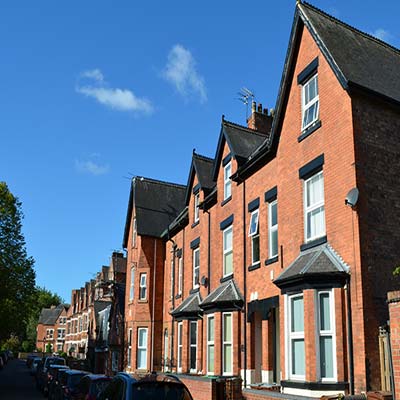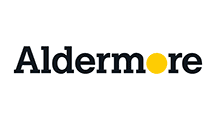Can I get a HMO mortgage?
We can help you get an HMO mortgage. Lenders will typically (but not always) want you to have pre-existing experience as a landlord of some sort. You will need a deposit of at least 15%, but there are property restrictions at this level of borrowing. You will have more options with an HMO deposit of 20%-25% or more.
Some lenders only accept HMO properties of a certain size, defined by the number of bedrooms (e.g. up to 6 bedrooms) they will offer borrowing on and may want all applicants on one tenancy agreement. Other lenders put no limit on number of bedrooms or tenancy agreements. We will help you find the right option.
Rent from the property must typically be between 125% and 145% of the monthly mortgage payment, to show it will be affordable at times when rooms are empty, or if you faced difficulties collecting rent.
Whatever your borrowing needs or experience, get in touch, as we are in the perfect position to help you.
Factors that may impact you getting a HMO mortgage
- Some types of adverse credit
- Not having enough money for a deposit
- The value of the property being less than you expected
If you have questions, chat to our advisors on live chat, via the phone, or get a call-back we're here to help.
We work with over 80 mortgage lenders, including:
Compare today's HMO mortgage rates:
Eligibility for an HMO mortgage
- First time buyers to experienced landlords
- You must be over 18 years old
- Minimum deposit 15% of the property value
- Upper age limits at application are flexible
- Low personal incomes are accepted
- Property, pension and employment income is OK
We can help you with...
- HMO mortgages with no limit on maximum size
- Multi-unit blocks with no limit on maximum size
- Borrowing of up to 85% loan to value (LTV)
- No minimum income options
- Lenders with no upper age limits
- Flexible affordability calculations
- 2 and 5 year deal periods
- Cashback, free valuation and other incentives available
- Borrowing based on rental income from property
- Unlimited portfolio sizes
- Remortgage to like for like loan, or to raise capital
- Special Purpose Vehicle (SPV) HMO mortgages
- Trading limited company HMO mortgages
- First time buyer HMO mortgages
- Repayment or interest-only payment options
Ready to get started?
Your personal advisor will call. Direct lines start 01603. Get today's rates, help, or apply. Lender terms provided in as little as two hours!
Buying property with an HMO mortgage?
Buy to let mortgages for HMO properties (houses of multiple occupation) can be a highly profitable investment opportunity for landlords, because each bedroom is let out to a different tenant, so there are multiple rents.
This means this type of property commonly achieves a higher yield than standard buy to lets.
HMO mortgages tend to carry higher rates and fees than mortgages for standard buy to let properties, due to them being deemed as higher risk by lenders.
The risk comes from HMOs often being subject to a higher turnover of tenants, potentially resulting in more rental voids than a standard buy to let. Damage to the property is also more common, because more people tend to live in an HMO.
Nonetheless, the costs are typically far outweighed by the profit achieved from the rental income, which is why HMO property investment is very popular.
Another benefit of an HMO is the lower impact on income when a tenant moves out. When a tenant moves out of a single occupancy buy to let property, all of the rent stops until a replacement tenant moves in. But, with an HMO, you still have income from your other tenants. As a result, void periods can have less of a financial impact.
As a specialist HMO mortgage broker, our advisors have extensive experience in rental property finance, working with complex HMO cases and finding the best deal in the market for our clients.
You may be investing in a property that is a Multi-Unit Freehold Block, we can help with this property type too.
We can also help with HMO mortgages for first time landlords or first time buyers.
HMO mortgage deposits
Whilst some lenders will offer HMO mortgages that require a small deposit (15%-20%), there are even more lenders who offer products with a deposit of 25% or more. As you increase the amount of deposit you put down, you usually find the number of lenders and products available to you increases and the mortgage interest rate decreases.
You will generally find when you invest in rental property that there is no maximum loan amount. What will limit your borrowing is the rent the property is due to receive, because the rent is the method of paying the mortgage interest (or capital repayment) each month.
HMO mortgages with no minimum income
It’s possible to secure an HMO mortgage with no minimum income requirements. Buy to let mortgages in general are not reliant on the applicant’s personal income. The rent from the property covers the mortgage costs.
This is the reason many lenders only need to see some sort of income, but not a particular amount, when offering a mortgage. This is an important point though – it is generally necessary to have a modest alternate income source (whether from other property, some sort of employment or a pension) because there is always a risk of rental voids, where you are not receiving rent but still have the mortgage to pay.
HMO remortgages
An HMO remortgage is not a product, per-say, it is a process. The only big difference with HMO remortgaging over a buy to let remortgage is that it involves HMO properties.
If you do not remortgage when you reach the end of the initial rate period of your existing product, your monthly payments are calculated using your lender’s reversion rate.
This is always a variable rate, which puts you at risk of your monthly payments changing. You will generally find that a lender’s reversion rate is higher than other deals available in the market, so it makes sense to review your options.
Remortgaging your HMO can help you:
- Unlock capital, either by releasing equity as cash from a property already under mortgage, or by taking out a mortgage on a property you currently own outright, or ‘unencumbered’.
- Reduce your monthly payments, if mortgage rates have gone down since your last mortgage
- Protect yourself from further mortgage interest rate rises by fixing your rate, if rates are going up when you come to remortgage.
Why choose Commercial Trust?

Apply with ease by phone
It couldn't be easier to secure a HMO mortgage with our expert advisors. Ask all your questions and arrange an application on the phone from your sofa.
World class customer service
We'll find you a great deal and take all the admin work off your shoulders, so you can relax while we get your mortgage completed. All the while giving you progress updates.
Lender decision in 2 hours
By contacting you by phone and email you can get help more quickly than in-person services. It's possible to get you a lender decision in principle in as little as two hours after our call.

"Get a competitive deal, even on specialist rental properties"
HMO mortgages do not always require a specialist mortgage rate, understanding the difference can save you a lot of money.
Find out moreCosts involved with a HMO mortgage
Lenders may charge you for the valuation conducted on your property. They often also charge a product fee, sometimes this can be added to the mortgage.
You will need a conveyancing solicitor who will charge fees. Read our guide to choosing a conveyancing solicitor.
We charge a broker fee for our work. You pay in two parts. A booking fee, once we have found you a mortgage deal, at application. The majority of our fee is paid at completion of the mortgage.
Every mortgage comes with monthly mortgage costs based on the mortgage interest rate the lender charges. These are paid on either an interest-only or capital repayment basis.
How to apply for a HMO mortgage
1
Tell our advisors about the property you are investing in, your needs and circumstances. If you have credit concerns, chat to us about them, so we can put you with the right lender.
2
Your advisor will find the best possible deal from a search of thousands of products. They will get a lender decision in principle, this requires soft credit search (occasionally it is a hard credit search).
3
Your advisor will call to discuss the product they found for you. You will be presented with one mortgage that is the best match for all your needs and offers you the most cost effective option.
4
On your application, your advisor will submit your mortgage application. Your account manager then does all liaison and administrative work to complete the deal, whilst keeping you updated at every step.
Commercial Trust is a member of the Legal & General Mortgage Club.
We chose to work with Legal & General as they are the largest, longest-running club in the UK.
This gives our clients the confidence that their borrowing is with a lender selected by an established and trusted club, who are involved in nearly one in three mortgages processed by intermediaries like us.
What our clients say about us
Frequently asked questions
HMO stands for House of Multiple Occupation. It is a property rented out to at least three people, from more than one household. HMOs are sometimes referred to as a ‘house share’. Generally, tenants will have their own bedroom, but other parts of the property, such as living room, kitchen and/or bathrooms are shared facilities. Each tenant will usually pay rent to the landlord, which tends to be cheaper than renting an entire property. HMOs are popular with students, graduates, contractors or professional people and more, who are keen to live in affordable accommodation in expensive city-centre locations.
The council local to your HMO property will be able to tell you if your HMO property needs to be licensed. Sometimes this is mandatory. If your property is in England or Wales and is defined as a large HMO, you must obtain a licence from your local authority. You might still need a licence, even if your property isn’t classed as a large HMO. This varies across the UK, so you should check with your local council for a definitive answer. Failure to apply for a licence when one is required can carry significant penalties. A large HMO is defined by the following criteria:
- The property is rented to five or more people who are from more than one household
- Tenants share toilet, bathroom or kitchen facilities
- One or more tenants pay rent
The UK government’s website offers a postcode-based search in order to identify which council issues licences for your property, and where you can access further information regarding HMOs and their licensing. It is worth noting that you will need a separate licence for each HMO you run and that councils may have long timeframes (months) for processing a licence, so plan ahead. To get an HMO licence you can apply via the following links:
- Apply for an HMO Licence in England or Wales
- Apply for an HMO Licence in Scotland
- Register an HMO in Northern Ireland
Yes, even as a first-time buyer or first-time landlord, you could still get an HMO mortgage. While first-time buyer might have a little more difficulty obtaining a mortgage, there are lenders on our panel who will be able to provide an HMO mortgage. The criteria may be a little stricter, due to there being no previous experience of managing a property.
An HMO mortgage is a specific type of buy to let mortgage. The mortgages vary in several ways. As HMOs have multiple occupants, they are deemed a higher risk to loan money against than a traditional buy to let. This is because HMO tenants tend to have more transitional and/or seasonal (e.g. students) lifestyles. This can mean higher levels of tenant turnover. Secondly, due to the risk with lending on an HMO and the specialist nature of the property, the lender’s fees are often higher on HMO mortgages.
The main difference between an HMO and a multi-unit block is that an MUB (sometimes also called an MUFB, multi-unit freehold block) has no shared living facilities. Each unit will have a front door, kitchen facilities, a bathroom and a living space. The units in an MUB could, hypothetically, be split into leasehold titles and sold separately. You could not, however, sell a bedroom in an HMO, under a separate title, as it would lack all of the facilities required.
The minimum deposit that our lenders accept on an HMO mortgage is 15% of the loan to value of the property, but you will have a far greater range of products with a deposit of 20%-25% or more. To learn more about deposits, visit our buy to let mortgage deposit page or use our LTV calculator.
Lenders associate more risk with HMO products when compared to single self-contained units. As a result, HMO mortgage rates tend to be higher than standard buy to let mortgage products. Another reason rates can be higher is that the lender market for HMOs is smaller and less competitive than the traditional buy to let market. This means that because HMOs are a specialist product, there are fewer lenders compared to traditional buy to lets, thus there is less incentive for lenders to lower their rates.










